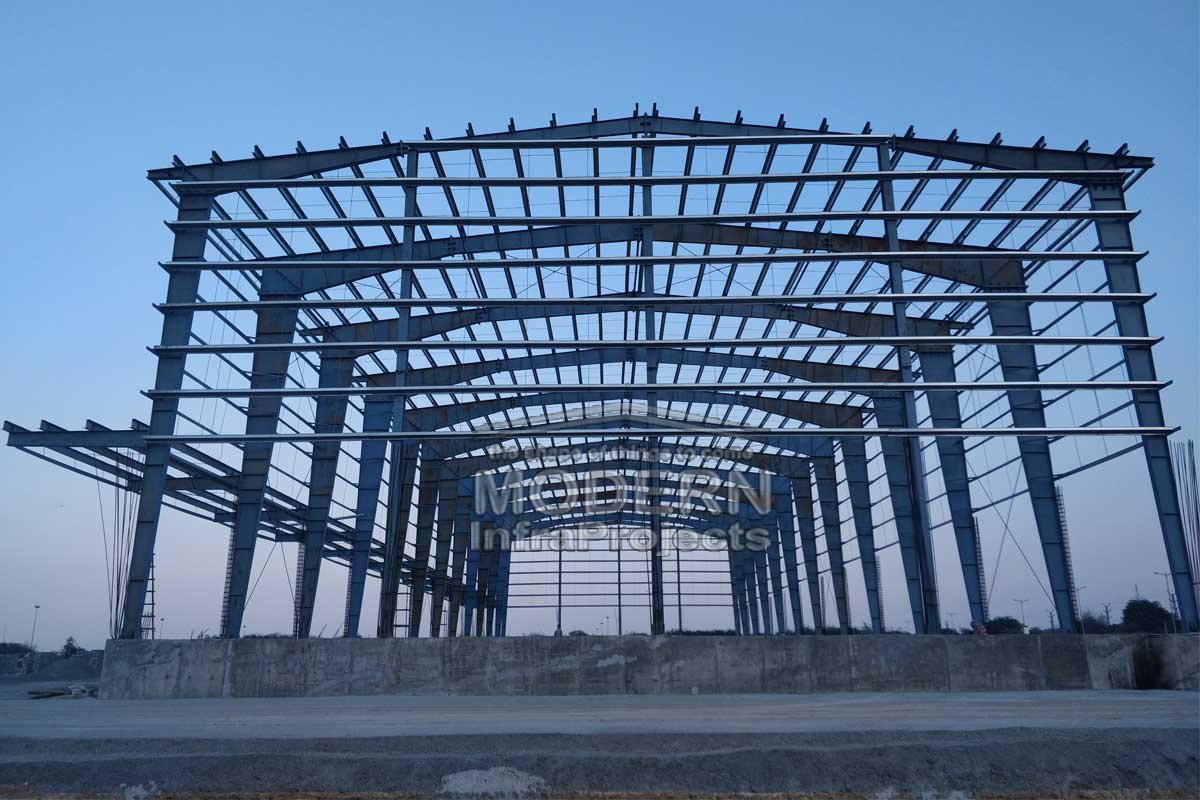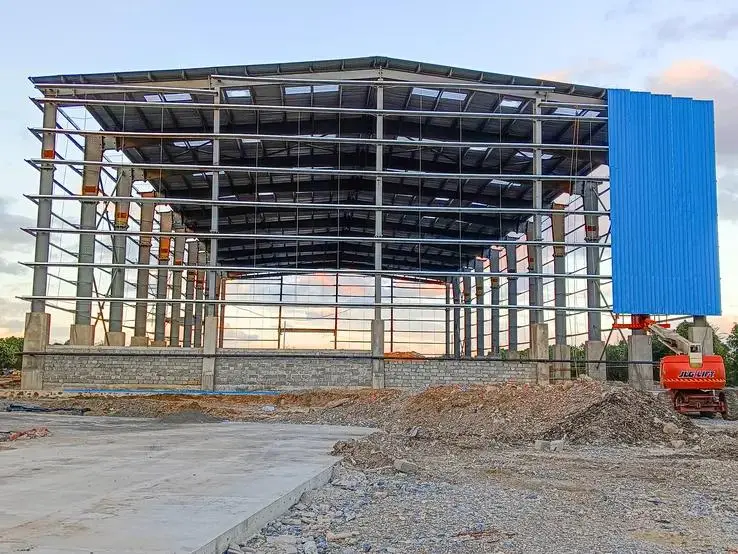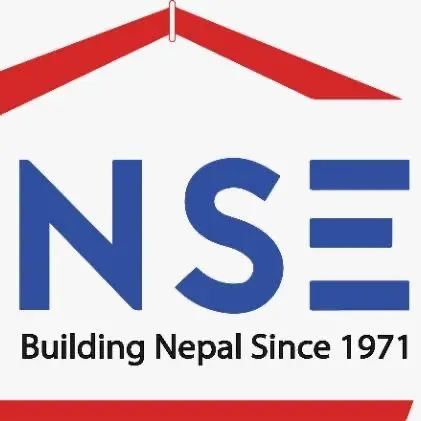
Types of Pre-Engineered Buildings: Exploring Versatility with Examples in Nepal
Pre-engineered buildings (PEBs) are revolutionizing the global construction industry, and Nepal is enthusiastically adopting the types of pre-engineered buildings to meet its unique needs. These steel structures, designed and fabricated off-site before on-site assembly, offer unmatched efficiency, affordability, and resilience.
The types of pre-engineered buildings cater to diverse industries and applications. In Nepal, they address critical challenges like seismic risks, rapid urbanization, and budget constraints.
This article explores the various types of pre-engineered buildings, their features, and their real-world impact in Nepal with practical examples. Whether you’re a developer, business owner, or farmer, understanding the types of pre-engineered buildings will guide your project decisions.
Let’s dive into their versatility and discover why they’re a game-changer in Nepal’s construction landscape.
Understanding Pre-Engineered Buildings
PEBs are steel structures manufactured in factories using standardized components like frames, beams, columns, and cladding. These parts are bolted together on-site, reducing construction time and costs compared to traditional methods.
In Nepal, different types of pre-engineered buildings are tailored to meet local needs, from earthquake-resistant designs to cost-effective solutions.

Their modular nature allows flexibility, making them suitable for industrial, commercial, agricultural, and even residential projects. Moreover, PEBs align with Nepal’s push for sustainable construction, producing less waste and using recyclable materials.
Why PEBs Are Thriving in Nepal?
Nepal’s construction sector faces challenges like seismic activity, limited budgets, and unpredictable weather. Their lightweight steel frames offer superior earthquake resistance, a critical factor after the 2015 Gorkha earthquake.
Additionally, PEBs cut construction time by 40–50%, ideal for fast-growing cities like Kathmandu, Pokhara, and Biratnagar. Costing NPR 2,000–4,500 per sq. ft., they are 20–30% cheaper than traditional concrete structures, making them accessible for businesses and individuals in Nepal.
Exploring the Types of Pre-Engineered Buildings
The types of pre-engineered buildings are varied, each designed for specific purposes. Below, we detail nine key types, their features, applications, and examples in Nepal to showcase their versatility.
1. Clear Span Buildings
Clear span buildings provide vast, column-free interiors, ideal for spaces requiring unobstructed layouts. Strong steel frames support the roof and walls, allowing spans up to 90 meters. In Nepal, these types of pre-engineered buildings are popular for industrial and recreational facilities.
- Features: No internal columns, large open spaces, customizable layouts.
- Applications: Warehouses, factories, sports arenas, exhibition halls.
- Nepal Example: In 2022, HIPCO Superbuild constructed a 15,000 sq. ft. clear span warehouse in Kathmandu for a logistics firm. Completed in five months at NPR 35 million, it saved 30% compared to a concrete structure.
2. Multi-Span Buildings
Multi-span buildings use internal columns to support larger areas, offering flexibility for expansive projects. These are cost-effective for facilities needing segmented spaces. In Nepal, multi-span PEBs are common in commercial and industrial settings.
- Features: Multiple bays with internal columns, scalable design, cost-efficient for large areas.
- Applications: Commercial complexes, manufacturing plants, distribution centers.
- Nepal Example: EPACK Prefab built a 10,000 sq. ft. multi-span commercial complex in Biratnagar in 2023, costing NPR 40 million. Completed in six months, it houses offices and retail units.
3. Single Slope Buildings
Single slope buildings feature a roof that slopes in one direction, ensuring efficient water drainage. Their simple design reduces costs, making them ideal for small-scale projects. In Nepal, these types of pre-engineered buildings suit agricultural and commercial needs.
- Features: Single-pitched roof, affordable, effective drainage.
- Applications: Small warehouses, poultry sheds, retail stores.
- Nepal Example: Tinny Craft Porta constructed a 2,000 sq. ft. single slope poultry shed in Chitwan in 2023 for NPR 5 million. Its design ensured ventilation and durability in Nepal’s humid climate.
4. Multi-Storey PEBs
Multi-storey PEBs are designed for vertical construction, offering strength and flexibility in urban areas. These buildings are gaining traction in Nepal for offices, apartments, and institutional projects.
- Features: Multiple floors, lightweight steel frames, seismic-resistant.
- Applications: Office buildings, residential complexes, schools, hospitals.
- Nepal Example: National Structure and Engineering built a four-storey office in Pokhara in 2024 for NPR 50 million (12,000 sq. ft.). Completed in seven months, it met Nepal’s seismic standards.
5. Lean-To Buildings
Lean-to buildings are smaller structures attached to existing PEBs, providing cost-effective additional space. They are popular in Nepal for expansions in space-constrained areas.
- Features: Attached to main structures, low-cost, quick installation.
- Applications: Storage extensions, workshops, small retail spaces.
- Nepal Example: Hulas Infra added a 1,000 sq. ft. lean-to storage unit to a factory in Lalitpur in 2023 for NPR 3 million, completed in three months.
6. Curved Roof Buildings
Curved roof PEBs combine aesthetic appeal with functionality, offering efficient water runoff and a modern look.
- Features: Curved roof design, visually appealing, weather-resistant.
- Applications: Showrooms, recreational facilities, retail centers.
- Nepal Example: Metfraa Steel built a 3,000 sq. ft. curved roof showroom in Kathmandu in 2024 for NPR 10 million, blending style and practicality.
7. Mezzanine Buildings
Mezzanine PEBs feature an intermediate floor between the main floor and roof, maximizing vertical space. In Nepal, these are used in warehouses and offices to create additional storage or workspaces.
- Features: Intermediate flooring, space-efficient, customizable layouts.
- Applications: Warehouses, offices, retail with storage needs.
- Nepal Example: A 5,000 sq. ft. mezzanine warehouse in Hetauda by EPACK Prefab, built in 2023 for NPR 15 million, added storage space for a manufacturing firm in six months.
8. Canopy Buildings
Canopy PEBs are open-sided structures with a roof, providing shade and protection. They are cost-effective for temporary or semi-permanent setups in Nepal’s commercial and public spaces.
- Features: Open sides, simple roof structure, quick to install.
- Applications: Parking lots, outdoor markets, bus shelters.
- Nepal Example: Tinny Craft Porta installed a canopy PEB for a parking lot in Bhaktapur in 2024, costing NPR 2 million for 1,500 sq. ft., completed in two months.
9. Modular PEBs
Modular PEBs are highly customizable, allowing for easy assembly and disassembly. These types of pre-engineered buildings are ideal for temporary or relocatable projects in Nepal, such as construction site offices.
- Features: Portable, reusable, flexible design.
- Applications: Temporary offices, disaster relief shelters, site camps.
- Nepal Example: Hulas Infra built a modular PEB office for a hydropower project in Solukhumbu in 2023, costing NPR 4 million for 1,200 sq. ft., completed in three months.
Types of Pre-Engineered Buildings: Comparison Table
| Type | Key Features | Applications | Cost in Nepal (NPR/sq. ft.) | Construction Time |
|---|---|---|---|---|
| Clear Span | No columns, spans up to 90m | Warehouses, factories, arenas | 2,500–4,000 | 4–6 months |
| Multi-Span | Internal columns, large areas | Commercial complexes, factories | 2,800–4,500 | 5–7 months |
| Single Slope | Sloped roof, cost-effective | Small warehouses, agricultural sheds | 2,000–3,500 | 3–5 months |
| Multi-Storey | Multiple floors, urban-friendly | Offices, residential buildings | 3,000–5,000 | 6–8 months |
| Lean-To | Attached to PEBs, low-cost | Storage, workshops | 1,800–3,000 | 2–4 months |
| Curved Roof | Aesthetic, weather-resistant | Showrooms, recreational facilities | 2,500–4,000 | 4–6 months |
| Mezzanine | Intermediate floor, space-efficient | Warehouses, offices | 2,700–4,200 | 5–7 months |
| Canopy | Open-sided, simple roof | Parking lots, markets | 1,500–2,500 | 2–3 months |
| Modular | Portable, reusable, flexible | Temporary offices, relief shelters | 2,000–3,500 | 2–4 months |
Note: Costs vary by location, design complexity, and material quality. Contact local providers for accurate quotes.
Advantages of Different Types of Pre-Engineered Buildings in Nepal
Each type of pre-engineered building offers unique benefits, making them ideal for Nepal’s diverse needs:
- Speed: PEBs reduce construction time significantly. For instance, a clear span warehouse in Kathmandu took five months, while a concrete structure would take 12–18 months.
- Cost Savings: PEBs cost NPR 1,500–5,000 per sq. ft., saving 20–30% compared to traditional construction. A single slope shed in Chitwan saved NPR 2 million over concrete.
- Seismic Resilience: Lightweight steel frames flex during earthquakes, critical in Nepal’s seismic zones. The 2015 Gorkha earthquake proved PEBs’ durability.
- Sustainability: PEBs use recyclable steel, reducing waste by 10–20%. Insulated panels cut energy costs by 15–25%, supporting Nepal’s green goals.
- Versatility: From modular shelters to multi-storey offices, PEBs adapt to various needs, as seen in Pokhara’s office buildings and Solukhumbu’s site offices.
- Scalability: Lean-to and mezzanine PEBs allow easy expansions, like the Lalitpur factory addition.
Challenges of PEBs in Nepal
Despite their advantages, PEBs face hurdles in Nepal:
- Aesthetic Constraints: Modular designs may not match traditional Nepali styles like Newari or Tharu architecture, limiting residential use.
- Skilled Labor Shortage: Nepal has a limited pool of workers trained in PEB assembly, increasing reliance on specialized firms.
- Logistics Issues: Transporting components to remote areas like Mustang or Dolakha is costly and challenging.
- Steel Price Volatility: Global steel price fluctuations, up 15% since 2023, can impact budgets.
- Maintenance Needs: Steel requires protective coatings to prevent rust, necessitating periodic inspections.
Real-World Applications in Nepal
The types of pre-engineered buildings are transforming Nepal’s infrastructure:
- Industrial: A multi-span factory in Hetauda by National Structure and Engineering, built in 2023 for NPR 45 million, supports local manufacturing with a 10,000 sq. ft. facility.
- Commercial: A curved roof retail store in Bhaktapur by Tinny Craft Porta, completed in 2024 for NPR 8 million (2,500 sq. ft.), attracts customers with its modern aesthetic.
- Agricultural: A single slope dairy shed in Rupandehi by Hulas Infra, costing NPR 2.5 million for 1,200 sq. ft., was completed in three months, boosting local farming.
- Institutional: A multi-storey PEB school in Butwal
Read More: PEB Cost Nepal: How Pre-Engineered Buildings Save Money in Construction



